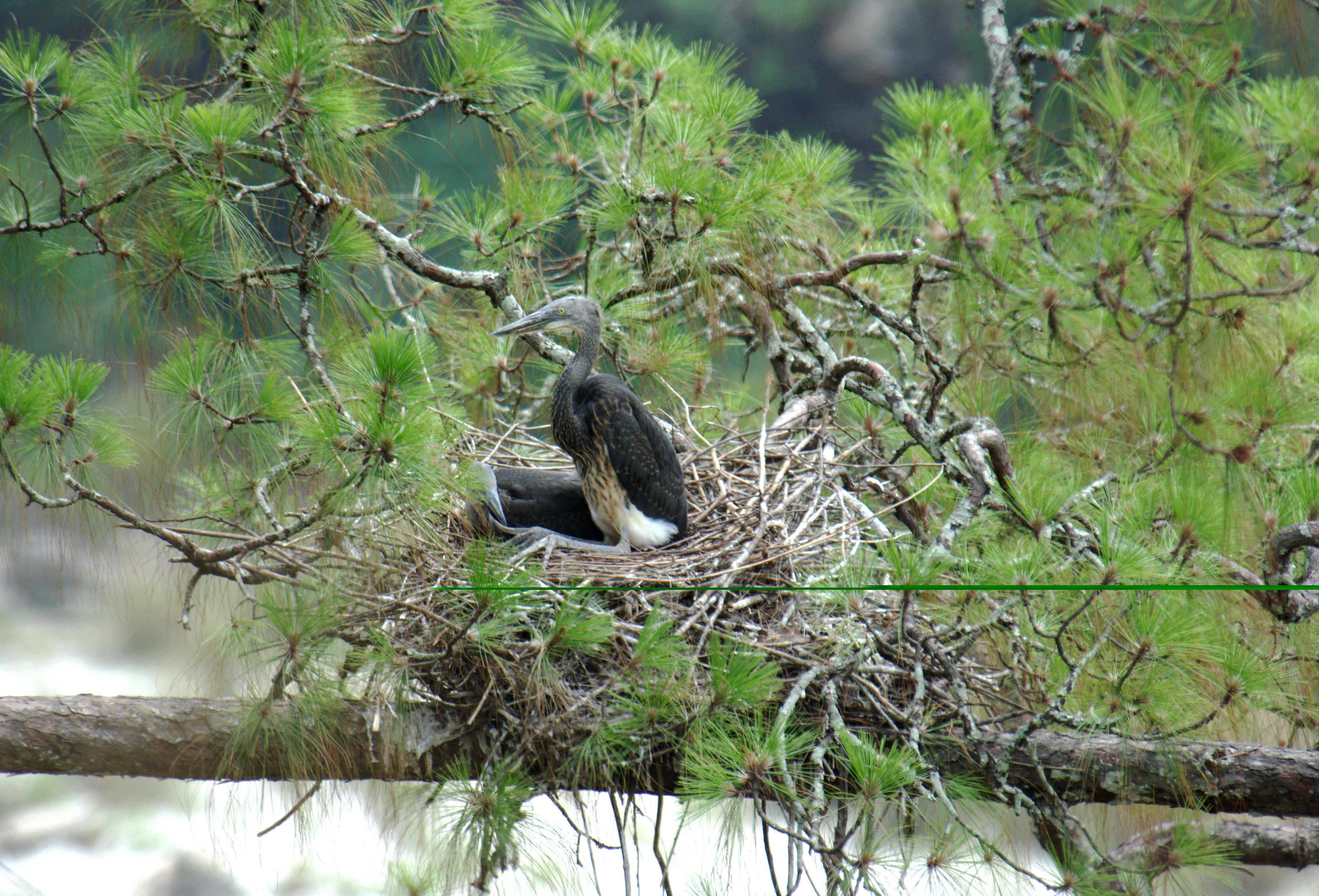
White-bellied Heron: A Rare Jewel of the Eastern Himalayas
Introduction to the White-bellied Heron
The White-bellied Heron, Ardea insignis, stands as one of the rarest and most elusive herons in the world. This magnificent bird, with its striking appearance and secretive nature, is a species of great interest and concern among conservationists and bird enthusiasts alike.
Physical Description
The White-bellied Heron is a large bird, measuring about 127 cm in length, making it one of the largest herons globally. Its plumage is primarily slate-gray with a contrasting white underbelly, from which it derives its name. The bird's long neck, powerful bill, and striking yellow eyes add to its impressive demeanor.
Habitat and Distribution
This heron inhabits the foothills of the eastern Himalayas, with its range extending through Bhutan, Northeast India, Myanmar, and possibly Southern China. It favors undisturbed riverine ecosystems and wetlands, often in forested areas or near tall grasslands, which provide essential feeding and nesting grounds.
Behavior and Lifestyle
The White-bellied Heron is known for its solitary and shy nature. It is typically seen alone or in pairs, often remaining motionless for long periods. This bird is crepuscular, being most active during dawn and dusk, when it forages along riverbanks and in shallow waters.
Feeding Habits
Its diet consists predominantly of fish, supplemented by amphibians and small reptiles. The heron employs both active and passive hunting strategies, often standing still to ambush prey or slowly stalking through shallow waters.
Breeding and Nesting Habits
Little is known about the breeding habits of the White-bellied Heron due to its rarity and elusive nature. It is believed that they nest in tall trees close to water bodies, constructing large nests from sticks and branches.
Egg Laying and Incubation
The female lays a small clutch of eggs, usually two to three in number. Both parents are involved in the incubation process, which lasts about 28 to 35 days. The eggs are pale blue-green in color, typical of heron species.
Chick Rearing and Parental Care
Chicks are altricial and require extensive care from both parents. They are fed a diet of regurgitated fish and other aquatic prey. The young fledge from the nest several weeks after hatching but remain dependent on their parents for a period.
Vocalizations and Communication
The White-bellied Heron is generally a quiet bird but may emit soft cooing sounds and louder alarm calls when disturbed. Vocalizations are more frequent during the breeding season.
Conservation Status
The White-bellied Heron is classified as Critically Endangered by the IUCN. Its population is declining due to habitat destruction, particularly the loss and degradation of riverine ecosystems, and disturbances from human activities. Conservation efforts are focused on habitat protection and studying the species to understand its ecological needs better.
Similar Species and Taxonomy
Belonging to the order Pelecaniformes, family Ardeidae, the White-bellied Heron is often compared to the Great Blue Heron and the Grey Heron but is distinguished by its larger size and unique coloration. It shares some habitat preferences with other large herons but is unique in its geographic distribution and behavior.
The White-bellied Heron in Utah
The White-bellied Heron is not found in Utah or anywhere in North America; its range is limited to the eastern Himalayas. In Utah, birdwatchers can observe other heron species in local wetlands.
Conclusion
The White-bellied Heron, Ardea insignis, is a symbol of the rich yet fragile biodiversity found in the Himalayan riverine ecosystems. Its rarity and the critical state of its population make it a priority for international conservation efforts. The survival of this majestic heron serves as a barometer for the health of its unique habitat, highlighting the importance of preserving and restoring the natural environments that sustain such extraordinary wildlife.